Large yellow flowerheads are abundant this time of year along roadsides and on almost any Iowa prairie, even small remnants or restoration projects. You may find cup plants, compass plants, yellow coneflowers, black-eyed Susans, brown-eyed Susans, rosinweed (soon to be featured at Bleeding Heartland), Jerusalem artichokes, common sunflowers, Maximilian sunflowers, or today’s plant.
Ox-eye (Heliopsis helianthoides) is native to most of North America east of the Rocky Mountains. Also known as false sunflower, oxeye sunflower, smooth oxeye, or sweet smooth oxeye, it has a longer blooming period than many prairie flowers. The shape of the leaves and the raised flower centers, which are yellow or orange, help distinguish ox-eye from other members of the aster family with yellow flowerheads. Ox-eye grows in wooded areas and on disturbed ground as well as in prairies.
A huge colony of ox-eye is thriving at a rest stop on the north side of I-80 near Bettendorf (Scott County), where I took most of the enclosed pictures in July. As a bonus, I included a few shots of goldenrod plants with an unusual feature.
The Minnesota Wildflowers and Illinois Wildflowers sites describe ox-eye foliage and flowers in detail. In Wildflowers of the Tallgrass Prairie, Sylvan Runkel and Dean Roosa write of these plants,
Bright, light yellow flowers appear from June to October. New flowers may be seen all through the summer, whereas most of the prairie flowers bloom only for a time and then are gone. […]
A variety of ox-eye is considered one of the best hardy plants for a wildflower garden border. It is considered especially suitable and valuable for planting in dry locations.
The Lady Bird Johnson Center website concurs: “Oxeye is hardy and easily grown as a showy garden perennial in dry sites and is a good choice for clay soil.”
A close look at some ox-eye flowers and buds:
A better view of the leaves and stems:
Ox-eye plants are most commonly between 3 and 5 feet tall, but some are much shorter than that:
These plants were on the taller end of the spectrum:
Ox-eyes with horsemint (wild bergamot, bee balm) that is a bit past its prime:
Ox-eyes resemble sunflowers, but the Minnesota Wildflowers site explains, “Smooth Oxeye is not a true sunflower. The ray flowers of true sunflowers are sterile, but are fertile in this plant.” Another difference, noted on the Lady Bird Johnson Wildflower Center’s website: “Unlike sunflowers, its rays persist on the flower heads; the rays of sunflowers wither and fall away.”
Large stand of ox-eyes behind two wild parsnip plants that bloomed earlier this summer:
An ox-eye blooming near some daisy fleabane in a restored Dallas County prairie:
Back to the rest stop along I-80: in front of these ox-eyes, some goldenrod plants that were not yet blooming caught my attention.
At first I thought the unusual foliage was a sign of a disease called aster yellows (pictured at the end of this post), but John Pearson of the Iowa Department of Natural Resources thought the anomalies looked more like galls formed by insects. According to the Bug Guide website, “Goldenrod bunch galls or rosette galls have a very characteristic shape, with a cluster of leaves at the top of a stem. They can be very numerous in some fields. They are caused by a Cecidomyiid midge Rhopalomyia solidaginis.” More goldenrod plants in the same area with rosette galls:

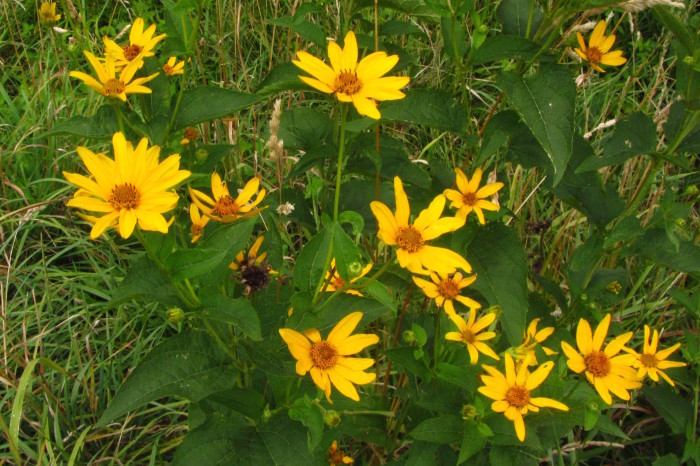
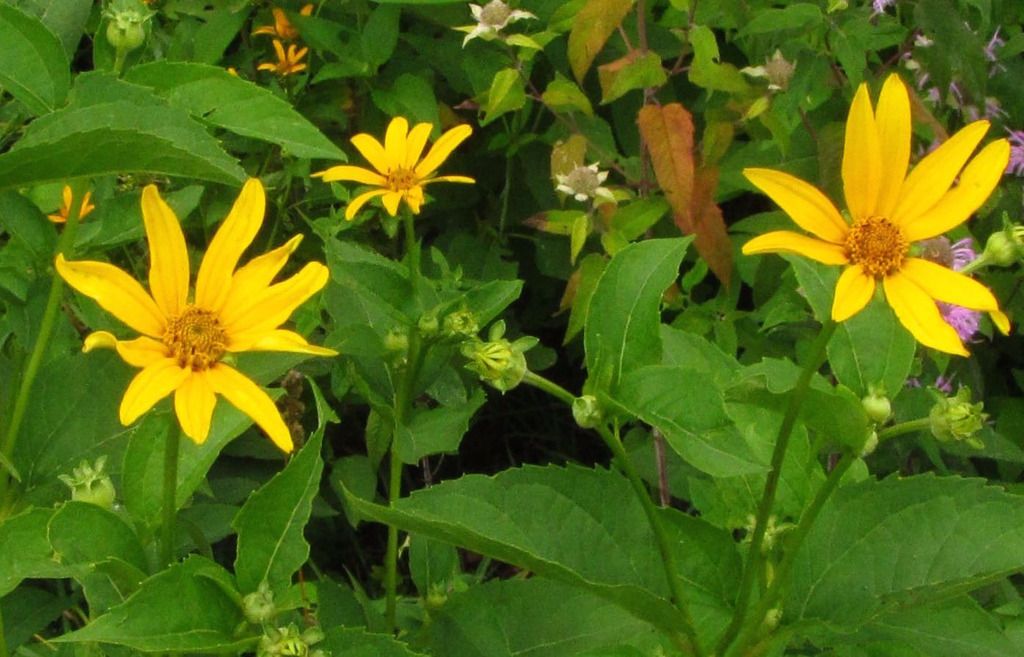
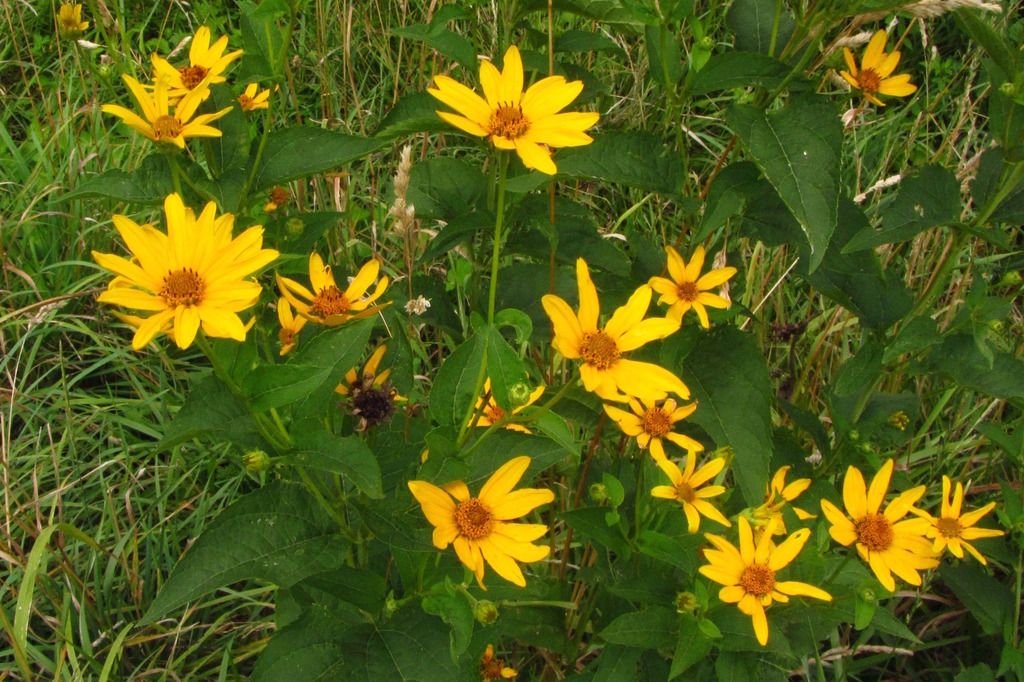
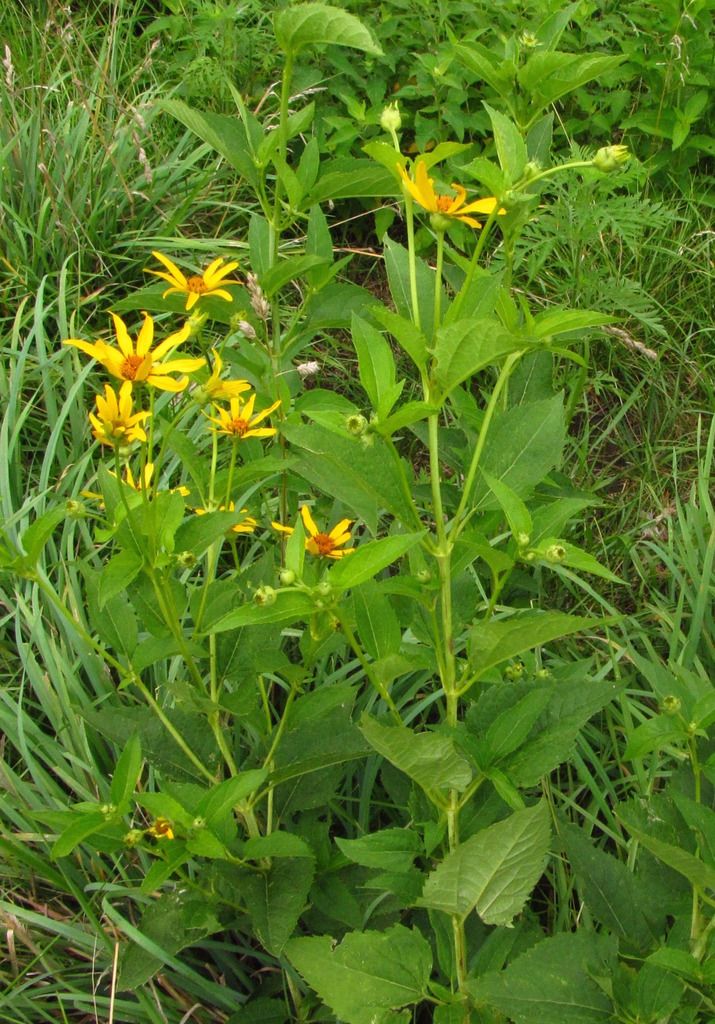
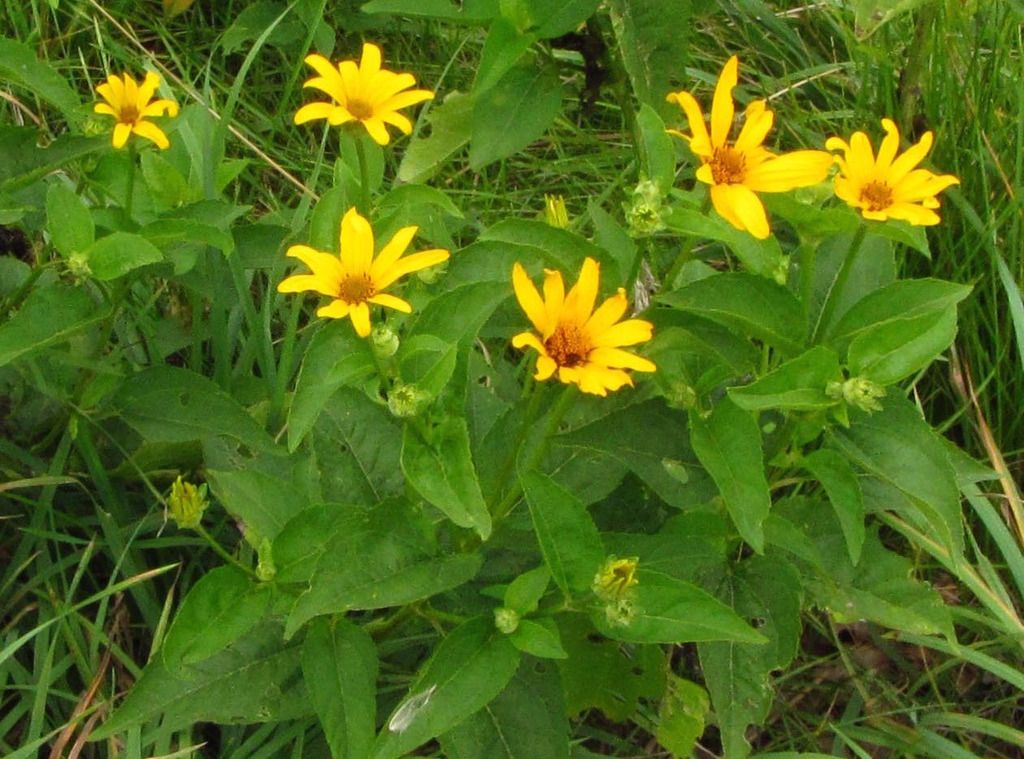



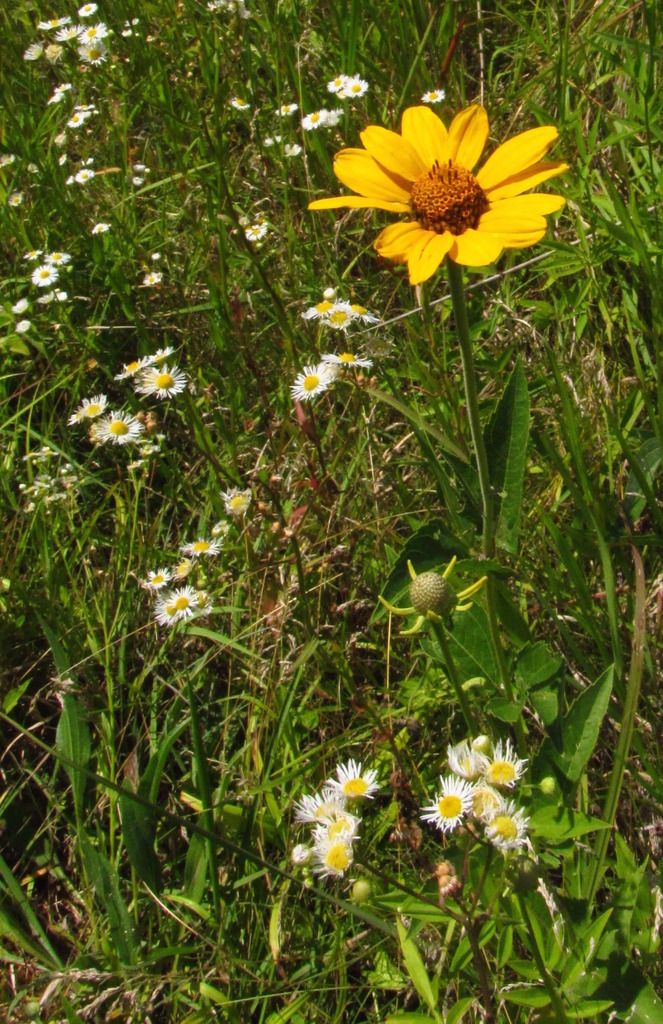



1 Comment
Ox-eye
I really like this flower, and the first blooming ox-eye each year marks the true beginning of summer for me. It’s easy to see that the the ox-eye is not a real sunflower if one examines the seeds. Sunflower seeds are curved, but the ox-eye seed has square edges. The seeds have to be collected with some diligence or the birds are likely to eat them all. If the seeds are not stored in secure containers, deer mice love them too.
PrairieFan Tue 2 May 9:45 PM